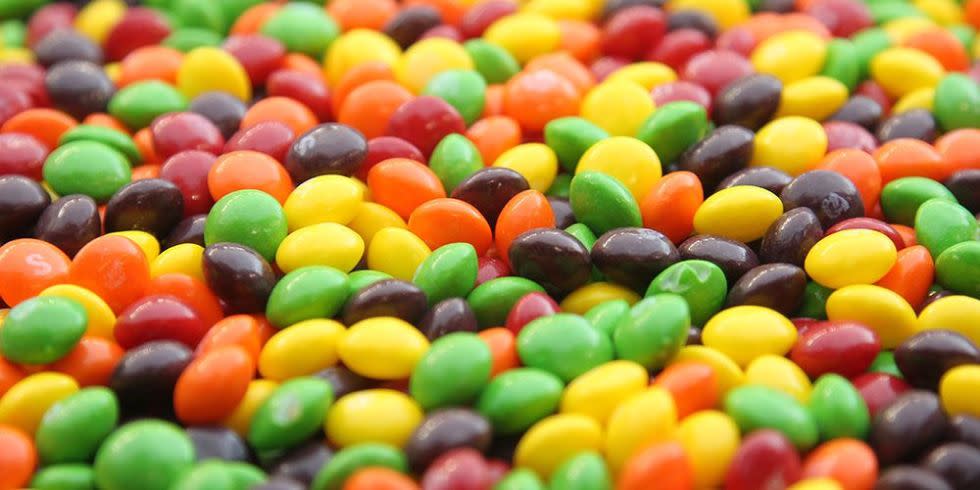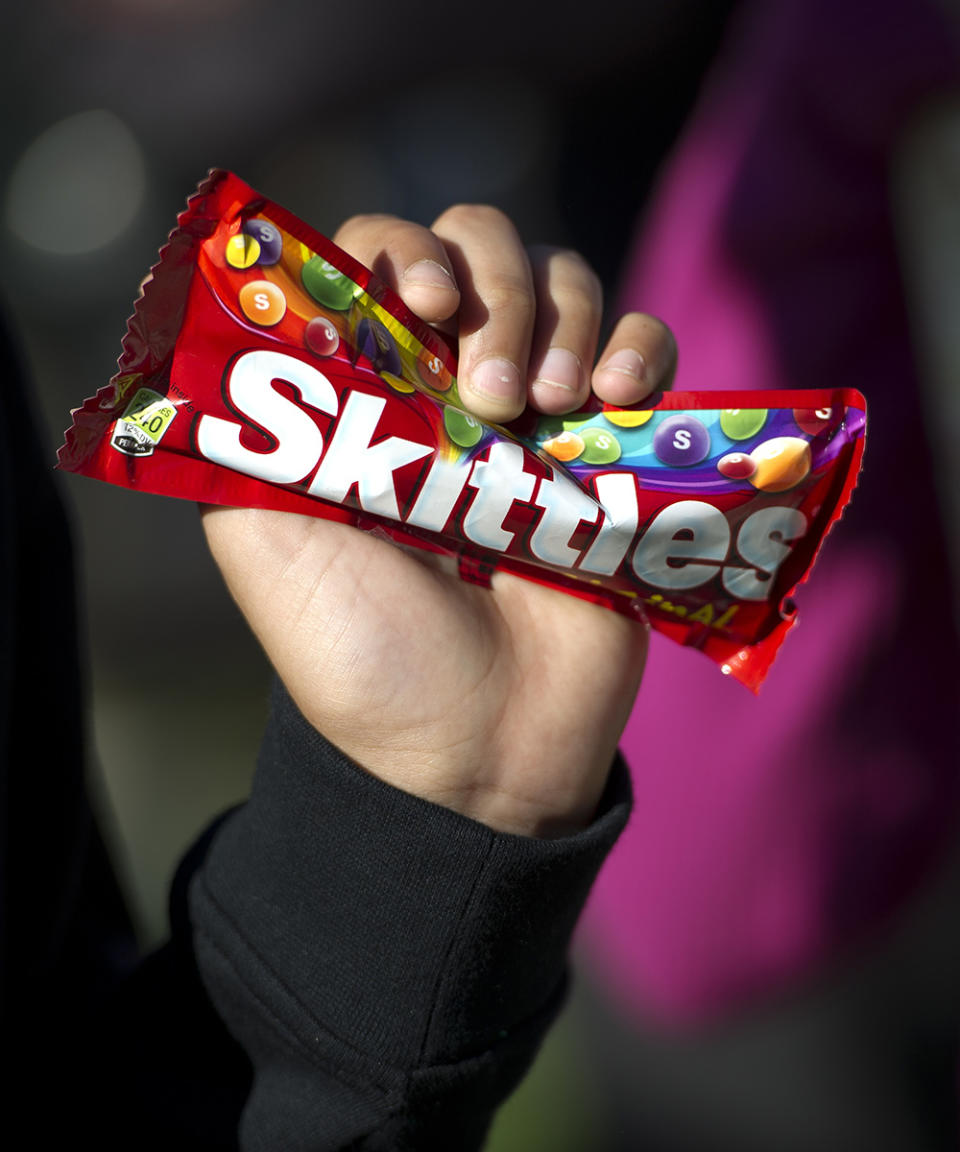The crazy thing you never knew about Skittles flavours

You thought you'd been tasting the rainbow. You thought wrong.
It turns out, Skittles come in five different colours, but they actually all taste the same. The red ones. The yellow ones. The green ones. The orange ones. The purple ones. All. Taste. The. Same.
THIS IS A REVELATION. A BAD ONE.
According to Brandeis University neuropsychologist Don Katz, our senses play tricks on us when the smell and the appearance of the sweets come into play, which means they can all taste the same without us even realising.
He explained that the author of Gastrophysics: The New Science of Eating, Charles Spence, did an experiment which involved giving British students clear beverages in clear bottles.
"The beverages had fruit flavourings," he explained to NPR of the clear liquids. "One was orange, one was grape, apple, lemon."
The students did a really good job of identifying the flavours – until he added the 'wrong' food colourings to each liquid, making the grape flavour orange for example, and the apple flavour purple.

"While I wouldn't say they went to chance, their ability to tell which was which got really subpar all of the sudden," Katz says. "The orange beverage tasted orange [to them]. The yellow beverage tasted like lemonade. There wasn't a thing they could do about it."
He continued: "The Skittles people, being much smarter than most of us, recognised that it is cheaper to make things smell and look different than it is to make them actually taste different.
"So, Skittles have different fragrances and different colours – but they all taste exactly the same."
Woah. So if the smell and appearance look like one thing, it can taste entirely different? Our minds are blown.
Dr Adam Cunliffe, nutritional scientist and associate lecturer at the London South Bank University, explained to Cosmopolitan UK why this might be.

"When we eat something, what we think is taste and our tongue doing the job... in fact, the tongue is quite a crude organ, which does sweet, salt, sour, bitter and unami. The nose is a much more complex organ, it can distinguish between about around 100,000 different volatiles – things in the air that you can smell.
"So when you eat a piece of cake or something, you bite it and you swallow it, and you think that tastes of chocolate or caramel, part of that information is coming from your tongue, but probably more is coming from your nose. All that information goes back into your brain that we call the flavour centre and it integrates what you've seen, what you've smelt, what you've tasted, but also what you remember."
Is anybody else in pure disbelief and planning a blind taste test right this second? Same.
Want up-to-the-minute entertainment news and features? Just hit 'Like' on our Digital Spy Facebook page and 'Follow' on our @digitalspy Twitter account and you're all set.
You Might Also Like

 Yahoo News
Yahoo News 
